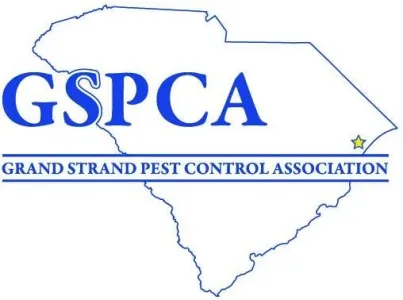Pest Control Service in Myrtle Beach
Are pests invading your home and disrupting your life? Best Home & Property Services's professional pest control service is here to help. Our expert exterminators use advanced techniques to eliminate unwanted insects and prevent future infestations. As a local, family-owned company with 63 years of experience, we've perfected our approach to keep your home pest-free.
- Comprehensive pest removal for spiders, ants, cockroaches, flies, silverfish, and beetles
- Quarterly treatments to maintain a pest-free environment year-round
- Non-invasive, family and pet-safe treatments
- Free detailed home inspection and customized treatment plan
- Guaranteed service with free follow-up visits if issues persist
Our Integrated Pest Management (IPM) approach targets specific pests in their preferred habitats, ensuring effective and long-lasting results. Don't let pests take over your home – trust Best Home & Property Services to restore comfort and cleanliness to your living space.

About Our Pest Control Service

Coastal living brings unique pest challenges due to the warm, humid climate and proximity to water. These conditions create an ideal environment for pests like termites, ants, cockroaches, and mosquitoes to thrive. As homes age and neighborhoods develop, these pests find more opportunities to invade properties, potentially causing structural damage and health concerns. Best Home & Property Services's comprehensive pest control services address these issues head-on, protecting your home and investment year-round.
Additional Pest Control Services
Beyond our basic residential pest control package, we offer specialized treatments for termites, bed bugs, and mosquitoes. These services are tailored to the unique needs of coastal properties, ensuring protection against wood-destroying organisms and vector-borne diseases.
Our Pest Control Process
- Thorough property inspection
- Customized treatment plan development
- Application of targeted, environmentally-sensitive treatments
- Ongoing monitoring and preventative maintenance
- Education on pest prevention techniques

Why Choose Best Home & Property Services For Pest Control?
With Best Home & Property Services, you're choosing a partner committed to preserving the value and comfort of your coastal home. Our tailored approach ensures year-round protection against pests, allowing you to enjoy your property without worry. Contact us today to schedule your free inspection and start your journey towards a pest-free home.
- Expertise in coastal pest management
- Integrated Pest Management (IPM) approach
- Safe, non-invasive treatments for most pests
- Quarterly service schedule for consistent protection
- Free callbacks between scheduled visits
- Licensed and certified technicians
Looking For Pest Control Near You?
Best Home & Property Services has spent 63 years perfecting our Pest Control services for homeowners in North and South Carolina. If you don’t see your location, reach out—we may still cover your area!











